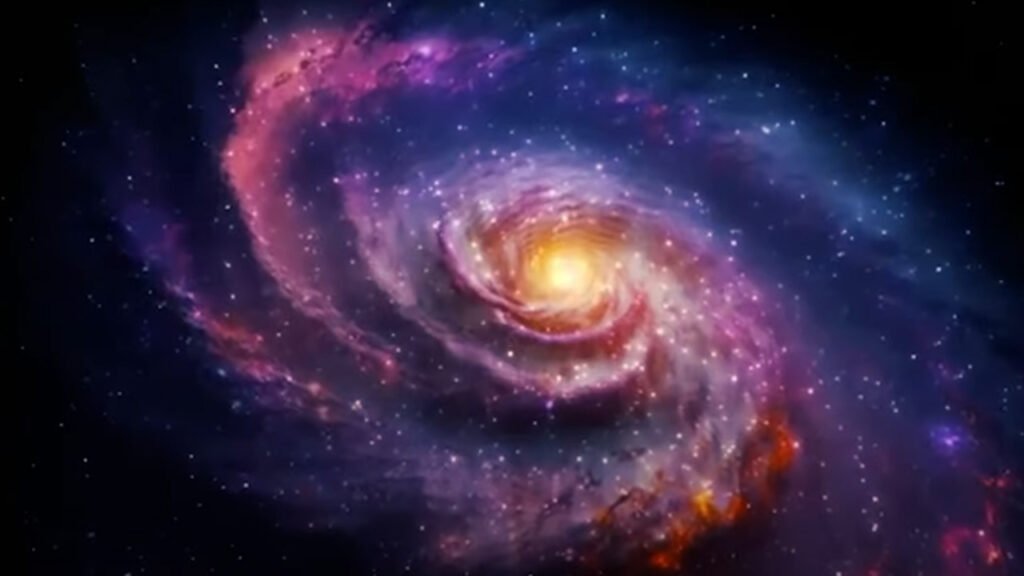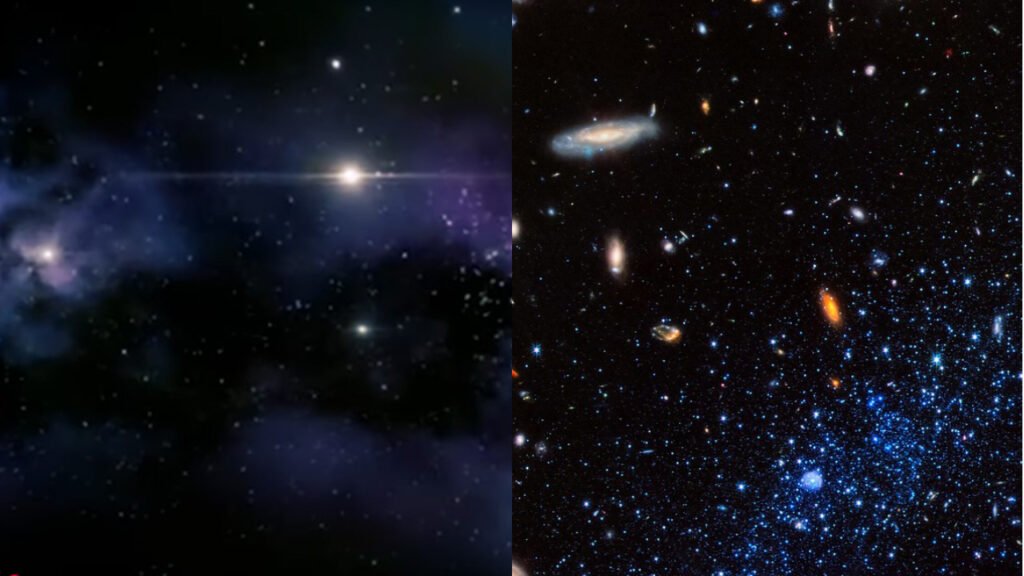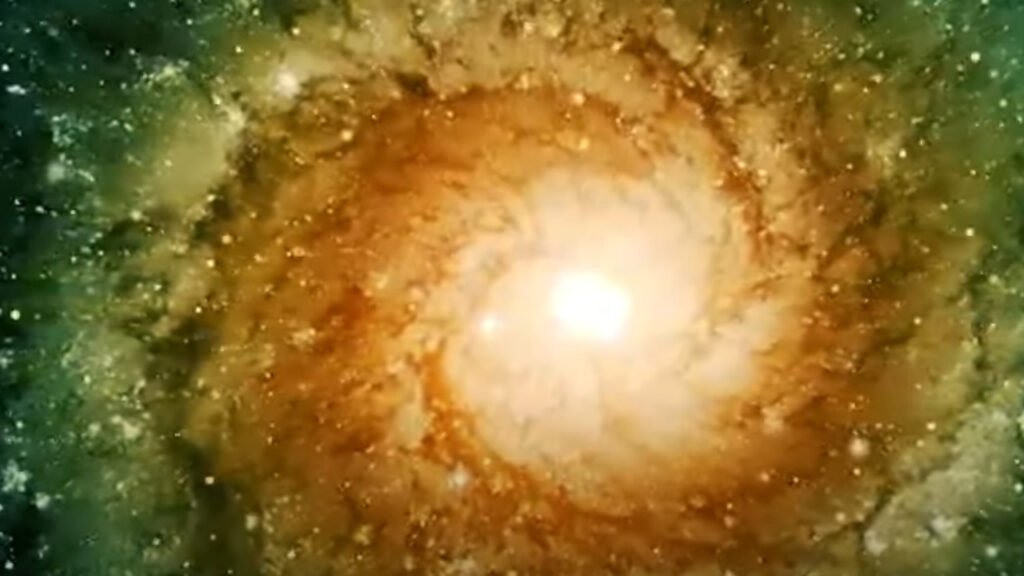The James Webb Space Telescope (JWST) has once again stunned the scientific community, capturing a startling image of a mysterious ancient galaxy in Leo (2025). This remarkable discovery offers a fascinating glimpse into the deep past of the universe, potentially unlocking secrets about the formation of early galaxies. As astronomers analyse this cosmic marvel, speculation is growing about its implications for our understanding of the cosmos.
Table of Contents
A Groundbreaking Discovery by James Webb
The James Webb Space Telescope has consistently provided breathtaking views of the universe, but its latest finding is truly exceptional. The telescope’s infrared capabilities have enabled scientists to peer into the depths of space, where they have uncovered an enigmatic structure within the constellation Leo. This startling image of a mysterious ancient galaxy in Leo (2025) has left astronomers astonished, as the galaxy appears to be much older and more evolved than previously thought possible for its era.
Unlike any galaxy observed before, this newfound cosmic entity challenges existing theories of galaxy formation. The discovery raises crucial questions about how early galaxies assembled and evolved in the aftermath of the Big Bang. With its advanced technology, the James Webb Space Telescope is revolutionising our understanding of the early universe.
What Makes This Ancient Galaxy Mysterious?
Several features set this newly discovered galaxy apart. The startling image of a mysterious ancient galaxy in Leo (2025) reveals an unusual structure, suggesting that it may have formed differently from conventional models. Here are some key aspects that make this galaxy so intriguing:
- Unusual Brightness: The galaxy shines much brighter than expected, indicating an abundance of old stars, which contradicts previous models of early galaxy formation.
- Unexpected Composition: Spectroscopic data suggest a high concentration of elements heavier than hydrogen and helium, implying that star formation occurred at a surprisingly rapid rate.
- Strange Morphology: Unlike typical spiral or elliptical galaxies, this one appears to have a distorted, irregular shape, possibly due to ancient cosmic interactions or mergers.
- Time Travel Effect: Since light from this galaxy has taken billions of years to reach Earth, the James Webb Space Telescope is essentially acting as a time machine, revealing a structure as it existed in the infancy of the universe.
This astonishing revelation opens up new debates in the scientific community, as existing theories struggle to explain how such an advanced structure could exist in the early cosmos.
James Webb’s Infrared Vision Unveils Hidden Secrets
The James Webb Space Telescope was designed to detect the faintest traces of infrared light emitted by distant galaxies. This latest startling image of a mysterious ancient galaxy in Leo (2025) was made possible due to Webb’s unparalleled ability to see through cosmic dust and gas, which often obscure visible-light observations.
Unlike the Hubble Space Telescope, which primarily operates in the ultraviolet and visible spectrum, Webb’s infrared vision allows astronomers to penetrate deep into the universe’s most concealed regions. By doing so, James Webb has now revealed a galaxy that might hold the key to understanding the early universe’s formation and evolution.

The Leo Constellation: A Cosmic Treasure Trove
The Leo constellation has long fascinated astronomers due to its rich collection of galaxies. Situated around 90 million light-years away, Leo hosts famous clusters such as the Leo Triplet and the Messier 96 Group. However, the startling image of a mysterious ancient galaxy in Leo (2025) adds a new layer of intrigue to this celestial region.
Scientists have long used Leo as a testing ground for studying cosmic evolution, and this latest discovery further cements its importance. The galaxy’s presence in this part of the sky suggests that early cosmic structures may have been far more diverse and widespread than previously assumed.
What This Discovery Means for Astronomy
The startling image of a mysterious ancient galaxy in Leo (2025) is more than just a visual spectacle—it has profound implications for our understanding of the cosmos. Some of the key scientific questions it raises include:
- How did galaxies form so early? – Traditional models suggest that early galaxies were chaotic and underdeveloped, yet this new find challenges that assumption.
- Did the first stars form sooner than we thought? – The high presence of heavy elements suggests that generations of stars may have lived and died far earlier than expected.
- Are there more such ancient galaxies? – If one such galaxy exists, it is likely that many more remain undiscovered. James Webb continued observations could lead to further groundbreaking discoveries.
This revelation is pushing astronomers to rethink fundamental ideas about cosmology and the formation of the first galaxies.

The Future of Deep Space Exploration
The James Webb Space Telescope has already exceeded expectations, but its journey is far from over. With each new observation, it is reshaping our perspective on the universe’s earliest days. The startling image of a mysterious ancient galaxy in Leo (2025) is just one of many discoveries that will emerge in the coming years.
Future missions using Webb will focus on studying the galaxy’s detailed chemical composition, star formation history, and potential interactions with other early cosmic structures. Scientists also hope to use Webb’s advanced instruments, such as the Near Infrared Camera (NIRCam) and Mid-Infrared Instrument (MIRI), to gain deeper insights into this ancient wonder.
As Webb continues to explore, the possibilities seem endless. Could it uncover even older galaxies? Might we find evidence of the first black holes forming in the early universe? These are just some of the exciting questions that lie ahead.
Public Reactions and the Scientific Community’s Response
The startling image of a mysterious ancient galaxy in Leo (2025) has captivated both scientists and space enthusiasts alike. Astronomers worldwide are eagerly awaiting more detailed studies, while the general public is in awe of the stunning images released by NASA.
Space agencies, including the European Space Agency (ESA) and the Canadian Space Agency (CSA), have hailed the discovery as a breakthrough in observational astronomy. Experts believe that this single image could redefine how we perceive the evolution of galaxies.
Social media is also buzzing with excitement, as people marvel at the intricate details captured by Webb. Many space lovers compare the image to legendary snapshots taken by Hubble, but Webb’s superior infrared capabilities make this an entirely new frontier.

Final Thoughts: A Cosmic Revelation Like No Other
The James Webb Space Telescope has once again proven its immense value in exploring the unknown. This startling image of a mysterious ancient galaxy in Leo (2025) is a game-changer in the field of astronomy, challenging long-held beliefs about the early universe.
With each new discovery, Webb is bringing us closer to understanding the origins of the cosmos. This particular galaxy may be just the beginning of a series of revelations that could transform our knowledge of how the first stars and galaxies formed.
As the telescope continues its mission, who knows what other mysteries await in the vastness of space? One thing is certain—the universe is far more complex and astonishing than we ever imagined.
What do you think about this startling image of a mysterious ancient galaxy in Leo (2025)? Could it be the key to unlocking the secrets of the early universe? Let us know in the comments!
